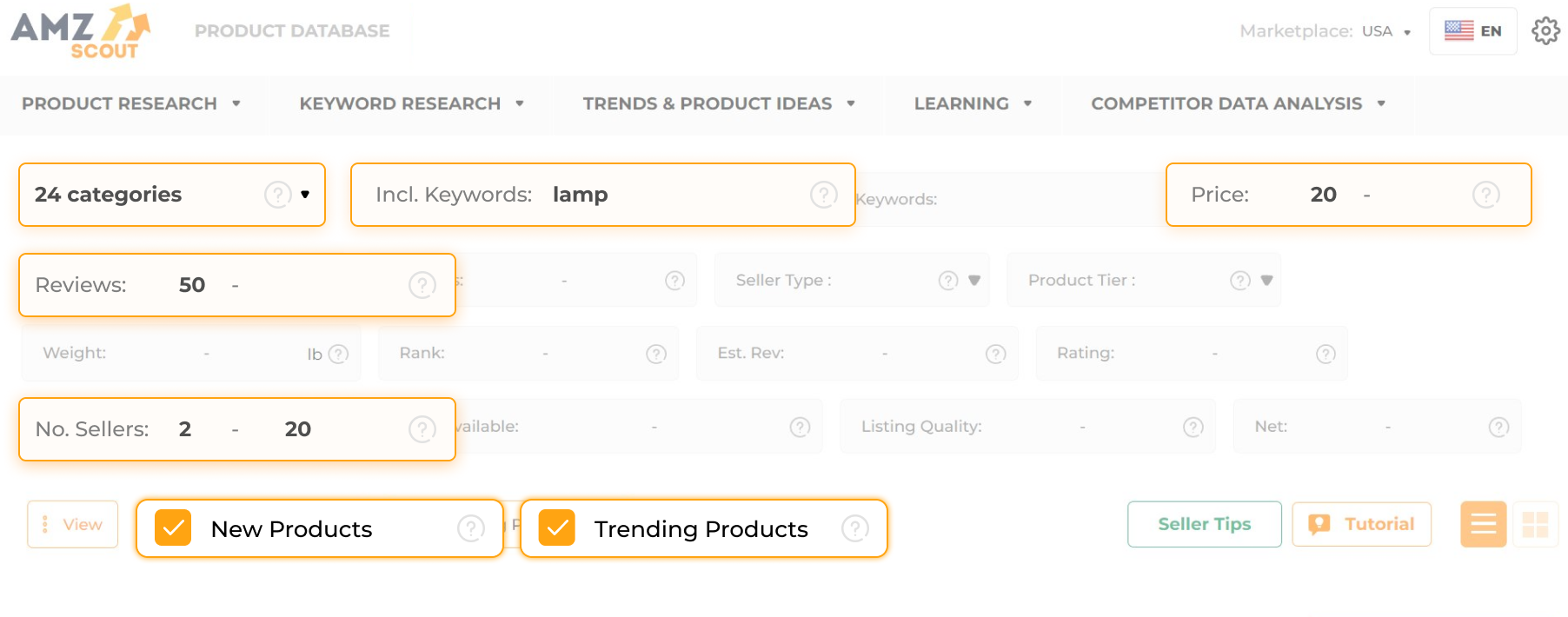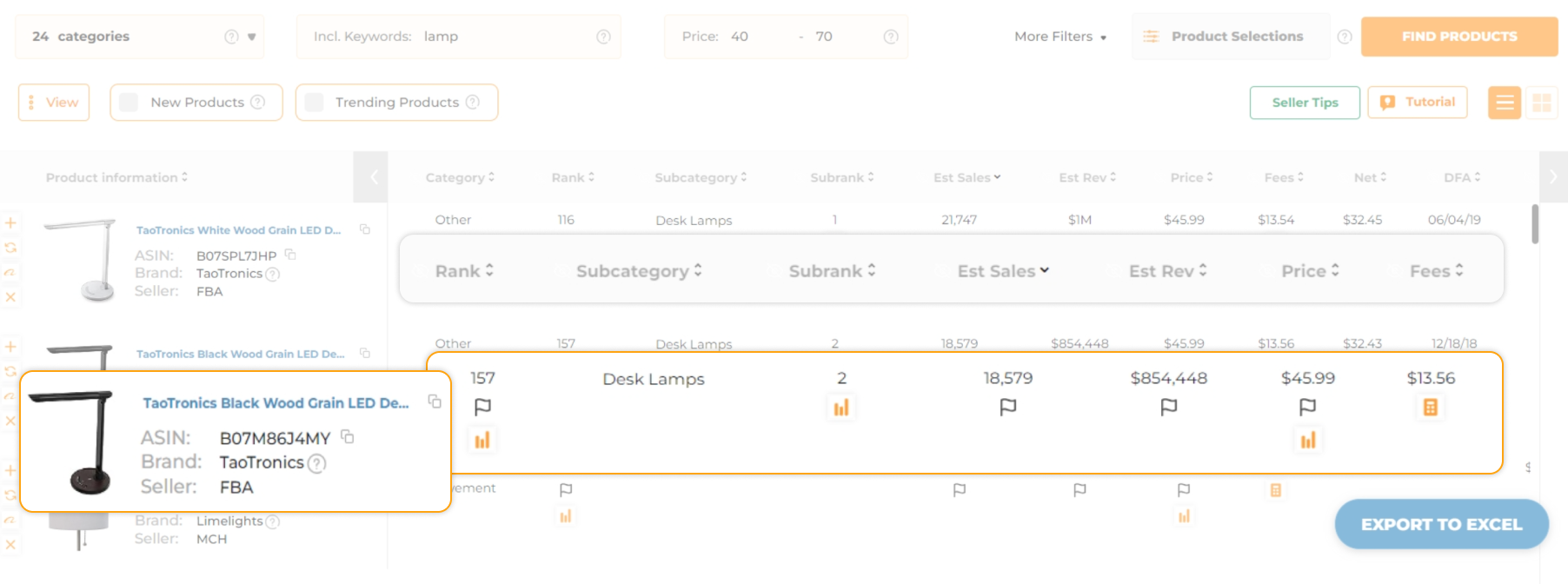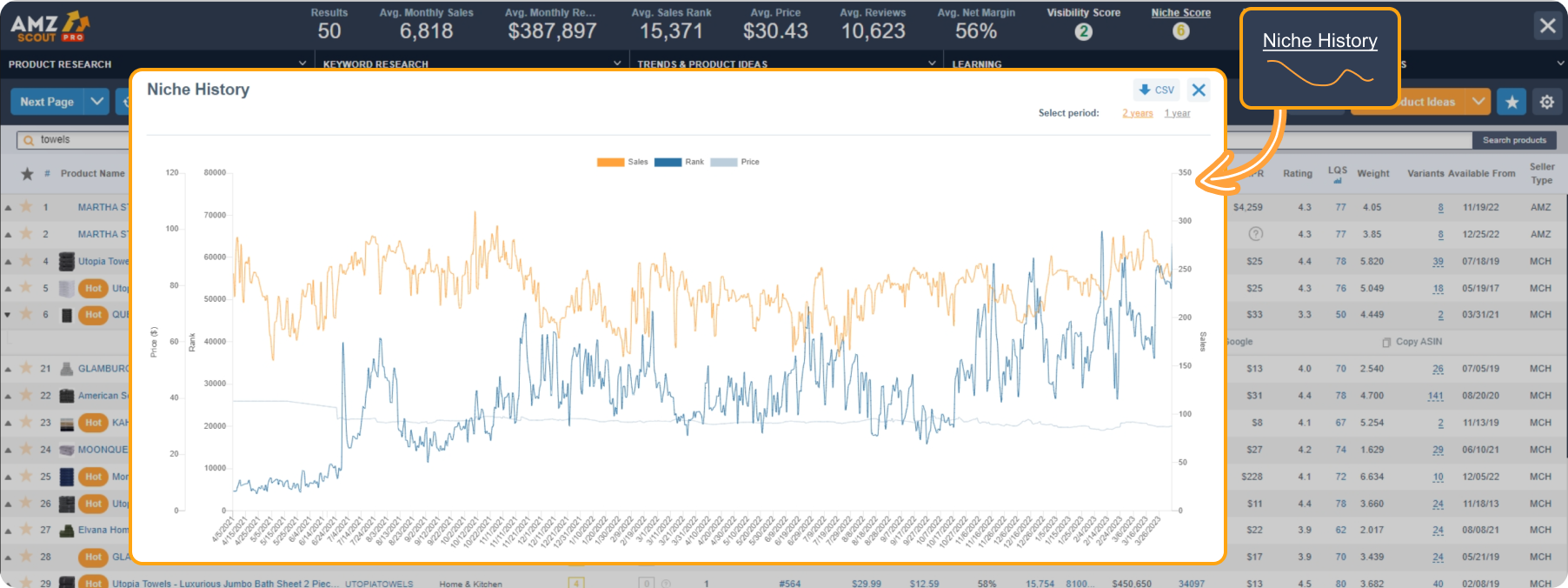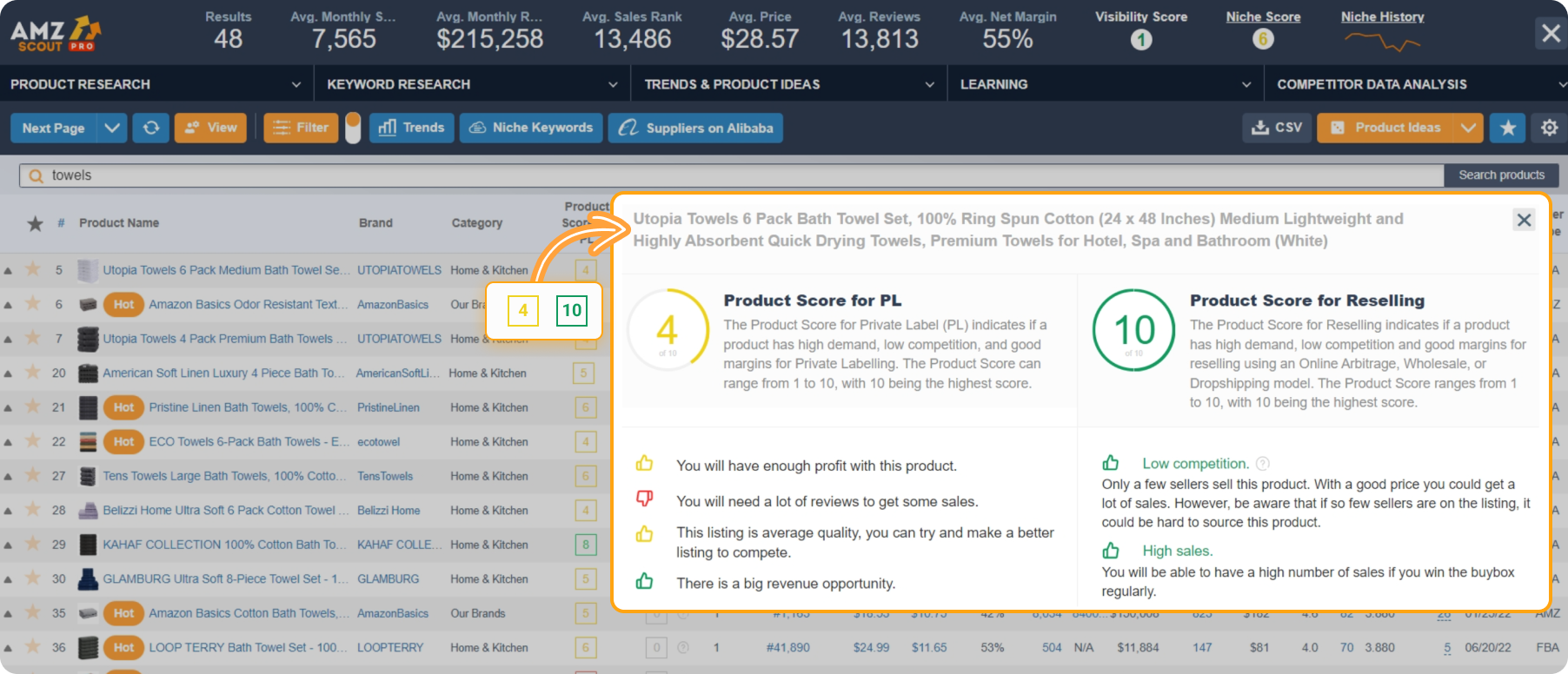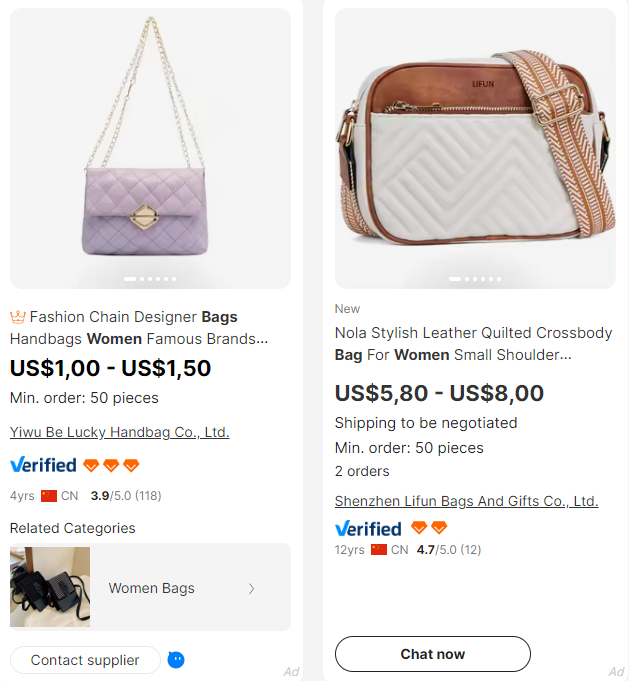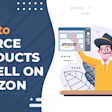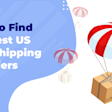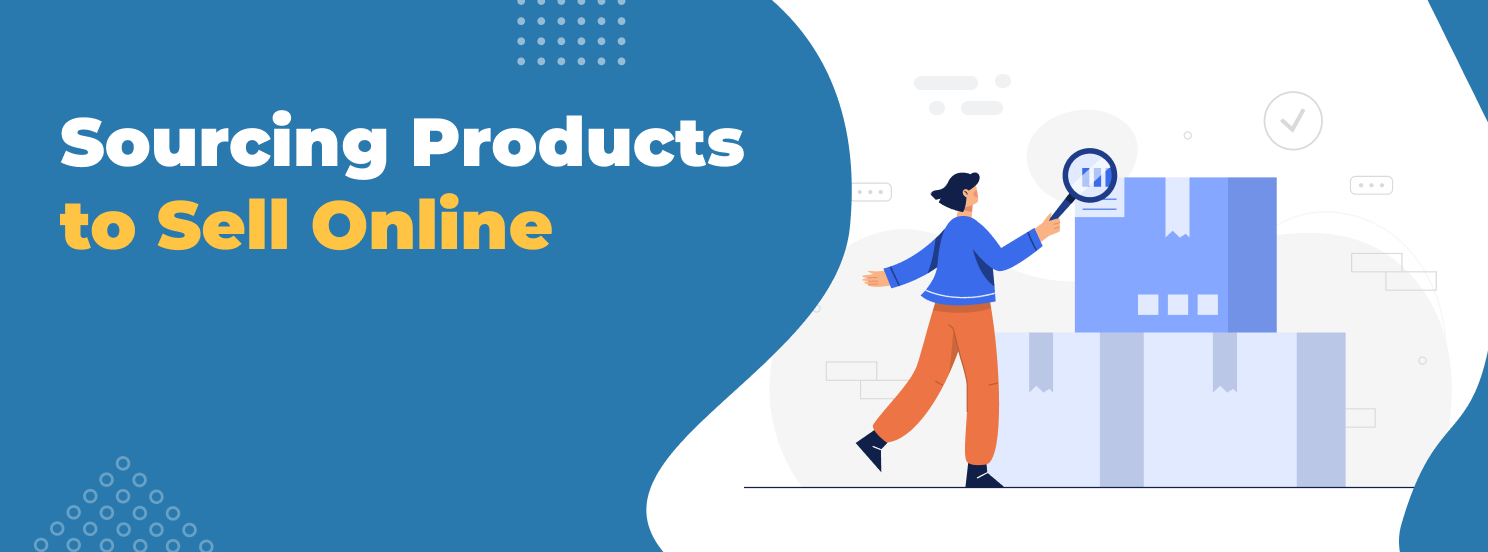
Sourcing Products to Sell Online: 6 Ways
Finding a reliable supplier is essential for online sellers. Identifying quality products at competitive prices gives you an edge, while ensuring profitability and customer satisfaction. Unfortunately, newcomers often face challenges when searching for the right supplier, such as unfavorable terms or fraud.
In this article, we'll discuss where to source products for online selling, and how to set up the process effectively.
Different Product Sourcing Methods
There are numerous ways to source products, and each approach is suited to different types of businesses. Let's explore the main methods and what makes each one stand out:
Online Wholesale Marketplaces
Many sellers find it most convenient to source products from online wholesale marketplaces when running a business from home. B2B online platforms like Alibaba are popular for their wide supplier base and competitive pricing. Ordering in bulk often means negotiating discounts, but remember to also consider shipping costs and import fees.
Offline Stores
Purchasing goods from outlets or brick-and-mortar stores is also a viable option for resellers. This method offers sellers a low-cost entry into a business venture without the need for large orders or shipping expenses. However, it also requires substantial time and effort to find discounted products. Additionally, scaling a business can be difficult, due to limited availability of models and difficulty maintaining a standardized supply chain.
Online Stores
Buying items from online stores is typically best suited to resellers, as it doesn't provide opportunities for personalization. While this method is convenient, since it eliminates the need to visit stores in person, it can also be time-consuming to search for profitable offers on websites.
Brand Owners
This strategy is perfect for resellers who want to to resell branded products without encountering legal complications. It guarantees substantial profits as branded items attract loyal customers, and their established recognition often minimizes the need for extensive marketing efforts. However, this method often demands a substantial investment as well as obtaining the brand’s permission to resell their products.
Manufacturing
This method entails acquiring white label goods directly from manufacturers. When establishing your own brand, you'll have more control over product quality and customization, allowing you to offer unique products. However, creating your own product designs can also be time-consuming and labor-intensive. Finding a reliable supplier with favorable pricing and high-quality standards can be challenging as well.
Distributors
You can buy products from distributors at discounted rates, which is advantageous if you're seeking a diverse range of products. However, this may require higher initial investments, as wholesale purchases typically necessitate large volume orders. You also need to consider potential shipping costs and customs clearance fees if the goods are delivered from abroad.
Now that you know about the available sourcing methods, let's review the steps for sourcing products to sell online.
How to Source Products to Sell Online
Finding a supplier largely depends on the platform where you intend to sell your products. Let's take Amazon as an example, given its status as one of the world's largest ecommerce companies. Amazon's appeal to newcomers lies in its simple entry process without the need for a website, granting access to a vast customer base. However, success largely hinges on efficient procurement management due to fierce competition.
While the criteria for selecting a supplier may differ slightly for a private label business versus reselling, the general process is largely similar. Now, let's delve into how to find a supplier if you're interested in starting your own brand.
Step 1. Researching Products and Niches
Before you start looking for a supplier, you need to decide what type of product you want to sell. Every seller's goal is to make money, so it's crucial to focus on highly profitable products.
To identify these kinds of products on Amazon, it’s essential to conduct thorough market research. To do this, consider using the AMZScout toolkit, which provides accurate data to help sellers spot a hot item easily.
Get a List of the Best Product Ideas with the Product Database
AMZScout's Product Database contains data for 600 million products, allowing you to find a product idea that aligns with your goals effortlessly.
Just follow these steps:
1. Go to the AMZScout Product Database. Sign up for a free trial by entering your email address.
2. Apply filters to refine your search. There are 16 criteria available. For a private label business model, focus on the following:
Price: Target items in the price range of $30 to $70 for higher margins.
Estimated Sales: Aim for at least 200 sales/month for stable demand.
Rating: Choose products rated between 3.5 and 4.3 stars so you can pinpoint areas where the product needs improvement by reading buyers’ reviews.
Weight: Avoid fragile or heavy items over 5 lbs to save on shipping costs.
3. Review your results. Click Find Products to generate a list of promising items.
The information contained in the Product Database is a strong starting point for your analysis. Next, it's essential to verify each product individually to ensure its profitability.
Evaluate Each Product with the PRO Extension
Utilize the AMZScout PRO Extension to verify each item on your list, ensuring alignment with your business model and potential for high profits. Follow these steps to use this tool:
1. Install the AMZScout PRO Extension.
2. Search products. Enter a product name or ASIN that you found through the AMZScout Product Database.
3. Open the AMZScout PRO Extension. Click the AMZScout icon in your browser's extension bar in the top-right corner.
4. Review the data. A new window will display statistics for products within the niche.
5. Evaluate the niche’s performance. To gain valuable insights into market dynamics and identify emerging trends:
Click on Niche History in the upper right-hand corner to check if the product is seasonal. This helps ensure effective inventory management, preventing shortages during peak sales periods and excess inventory when demand decreases. Additionally, understanding seasonal trends is useful for those who launch products for quick profits without a long-term commitment.
Review the Niche Score, which is based on estimates of profit, demand, and competition within the niche. Aim for scores greater than 7 to ensure high potential within the niche.
6. Assess the item’s data. Click on the Product Score next to the item in the list. You'll find text explaining whether the item is suitable for a private label or not, and the reasons behind this classification.
7. Calculate profit. Utilize the Profit Calculator located under the item to ascertain if it will still be profitable after FBA fees. Make sure that the profit margin exceeds 30%.
With the AMZScout toolkit's use of highly accurate data, you can quickly confirm whether an item is worth selling. Once you've identified the product you want to sell, it's time to find a supplier.
Step 2. Channels for Finding a Supplier
There are many ways to connect with suppliers. To explore potential suppliers and broaden your sourcing opportunities, consider utilizing these avenues:
Google: Search for "supplier + your location" to find nearby suppliers and potentially save on shipping costs.
Networking events: Attend industry events like exhibitions and shows to meet suppliers in person.
Online B2B marketplaces: Explore platforms focusing on supplier options.
Linkedin: Search for relevant keywords like "manufacturer" or "supplier", and filter for companies or industry-specific groups.
Online directories: View detailed company profiles and categorized contact information by product type on directories like Kompass.
To ensure that a supplier is suitable for your needs, it's essential to verify that they’re trustworthy, and assess their terms and conditions. In the following section, we'll discuss effective methods for checking these factors.
Step 3. Evaluating Suppliers and Manufacturers
Many beginners encounter scams when selecting a supplier. Keep it mind that merely requesting to see business licenses and certifications may not suffice.
Let's examine how to verify suppliers, using the example of the popular marketplace Alibaba. Several criteria should be considered:
Verified status: Utilize the "Verified" button on Alibaba to narrow down your search to only suppliers that have been vetted by the platform.
Years in business: Next to each supplier, you can see how long they've been active in the business. Generally, the longer the better.
Rating and reviews: Assess the performance of each supplier through ratings and reviews provided by other users.
Business type: Aim for manufacturers over “middlemen” to help you save on costs, and avoid delays or misunderstandings.
Court databases: Verify the supplier's legal status by checking Chinese databases for any legal issues.
Google search: Conduct a search on the supplier's company name to rule out incidences of fraud or scams, to help you avoid any potential issues.
Payment methods: Beware of suppliers requesting cash payments; opt for traceable methods, like PayPal, Western Union, or bank transfers.
Once you've confirmed a supplier's reliability, you can begin the negotiation process.
Step 4. Getting In Touch with Suppliers
It's advisable to contact around 15 suppliers to obtain multiple offers, which you can leverage for better terms and conditions. Here are a few tips from successful sellers on what to ask before placing an order:
What is the Minimum Order Quantity (MOQ), and how does the price vary based on quantity? Ordering in bulk may be more cost-effective to reduce the price for small orders.
What is the return policy? Ensure that there's an official document outlining any restocking fees for returned items, procedures for damaged products, etc. This also demonstrates the reliability of your supplier.
Is it possible to obtain a sample? This allows you to assess the quality and performance of the supplier’s products.
Is it possible to personalize packaging? Personalized packaging is crucial for branding and enhancing the overall customer experience, particularly if you're launching your own brand.
How quickly can items be produced if they're out of stock? The replenishment speed significantly impacts your sales. Consider having multiple suppliers in different locations to ensure prompt access to goods.
You can also assess the reliability of a supplier based on their response time and communication methods. Since this is likely to become a long-term relationship, it's essential to find a supplier that meets your needs and communicates with you consistently.
Another critical aspect when selecting a supplier is evaluating their logistics. We'll explore this further in the next section.
Step 5. Logistics and Fulfillment
Shipping costs and logistics management are crucial factors when choosing a supplier. Therefore, it's necessary to verify the following parameters:
Factory location: Verify where the factory is located, as this will affect shipping costs and delivery times. Some suppliers may indicate one legal address but operate from a different location, so it's essential to confirm this information.
Import fees: When dealing with suppliers located abroad, it's important to factor in customs fees for deliveries to the USA. These fees vary, depending on the value and type of goods being imported. Look for a supplier that accepts Delivery Duty Paid (DDP) terms, where they cover the cost of customs duties. This arrangement is more budget-friendly for you.
Shipping methods: Discuss with the supplier their shipping methods, including air and ocean freight, and which carrier they use. Calculate shipping costs in advance to avoid any surprises.
Documents: Ensure that the supplier is knowledgeable about compiling necessary documents for customs clearance to prevent delays and potential fees.
Many suppliers have their own logistics partners for order delivery. If you prefer to use your own logistics company, ensure that the supplier packages orders efficiently to avoid additional costs and that you will receive a valid tracking number.
Once shipping is set up, consider renting space in ports or warehouses to stock goods. You may need inventory tracking systems or additional assistance during peak seasons.
If using Amazon FBA, ensure that there are no customs clearance issues and request that the supplier delivers the goods straight to Amazon FBA centers. While this fulfillment method incurs fees, it reduces your inventory management time and enhances product visibility on the platform, increasing sales potential.
Efficient logistics management ensures timely delivery of goods to customers, minimizes shipping costs, and optimizes inventory control. By prioritizing these aspects in your supplier selection process, you can streamline operations, improve customer satisfaction, and boost the growth of your business.
Conclusion
While procurement is crucial for business success, identifying profitable products to source is equally important. Utilize the AMZScout toolkit for thorough item research. This will save you time and allow you to focus on setting up efficient business processes that drive sales and revenue.

